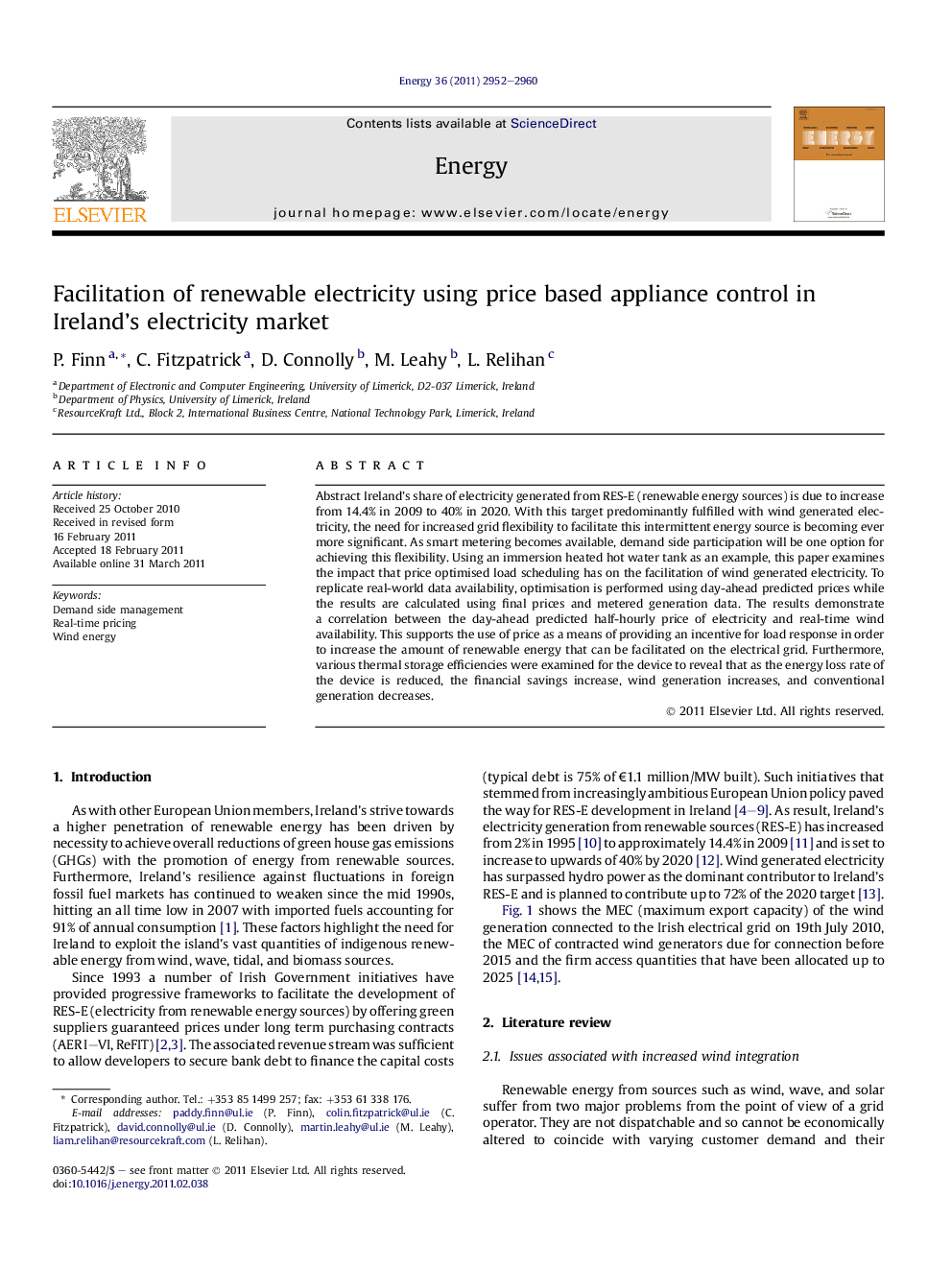| کد مقاله | کد نشریه | سال انتشار | مقاله انگلیسی | نسخه تمام متن |
|---|---|---|---|---|
| 1734527 | 1016158 | 2011 | 9 صفحه PDF | دانلود رایگان |

Abstract Ireland’s share of electricity generated from RES-E (renewable energy sources) is due to increase from 14.4% in 2009 to 40% in 2020. With this target predominantly fulfilled with wind generated electricity, the need for increased grid flexibility to facilitate this intermittent energy source is becoming ever more significant. As smart metering becomes available, demand side participation will be one option for achieving this flexibility. Using an immersion heated hot water tank as an example, this paper examines the impact that price optimised load scheduling has on the facilitation of wind generated electricity. To replicate real-world data availability, optimisation is performed using day-ahead predicted prices while the results are calculated using final prices and metered generation data. The results demonstrate a correlation between the day-ahead predicted half-hourly price of electricity and real-time wind availability. This supports the use of price as a means of providing an incentive for load response in order to increase the amount of renewable energy that can be facilitated on the electrical grid. Furthermore, various thermal storage efficiencies were examined for the device to reveal that as the energy loss rate of the device is reduced, the financial savings increase, wind generation increases, and conventional generation decreases.
► In Ireland in 2020, up to 12.75% of trade periods will require wind curtailment if load flexibility is not increased.
► A metered water storage heater offers similar daily manageable load capacity as an electric car used in Ireland.
► Increased use of wind generation can be achieved concurrently with reduced running costs.
► Increasing the energy loss rate of the device significantly reduces the benefits associated with demand side managing it.
► Further constraints are necessary to ensure concurrent reduction in demand on conventional generation.
Journal: Energy - Volume 36, Issue 5, May 2011, Pages 2952–2960